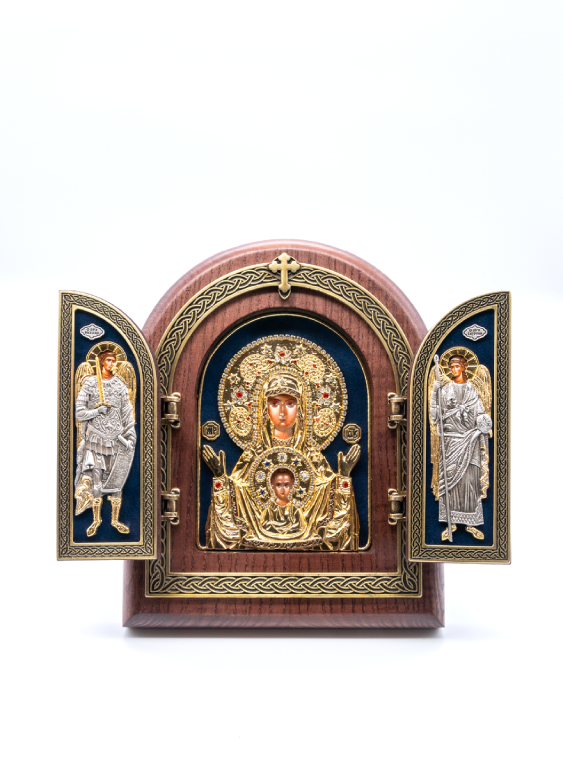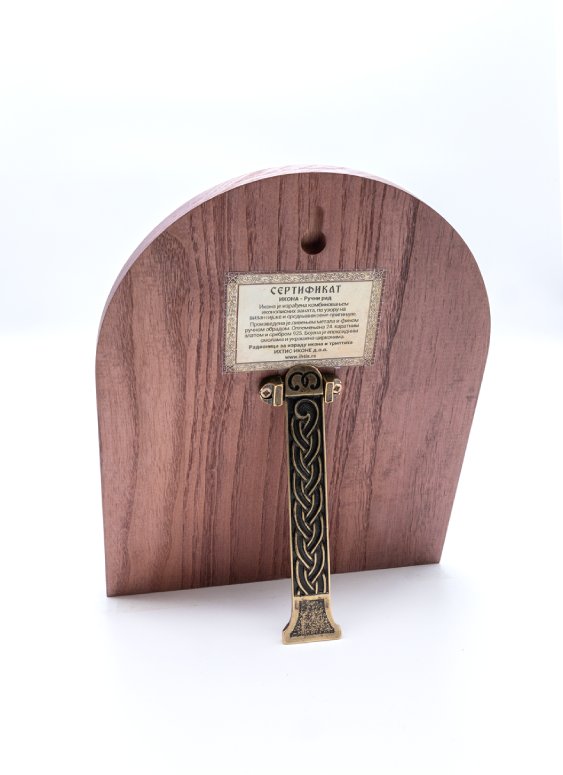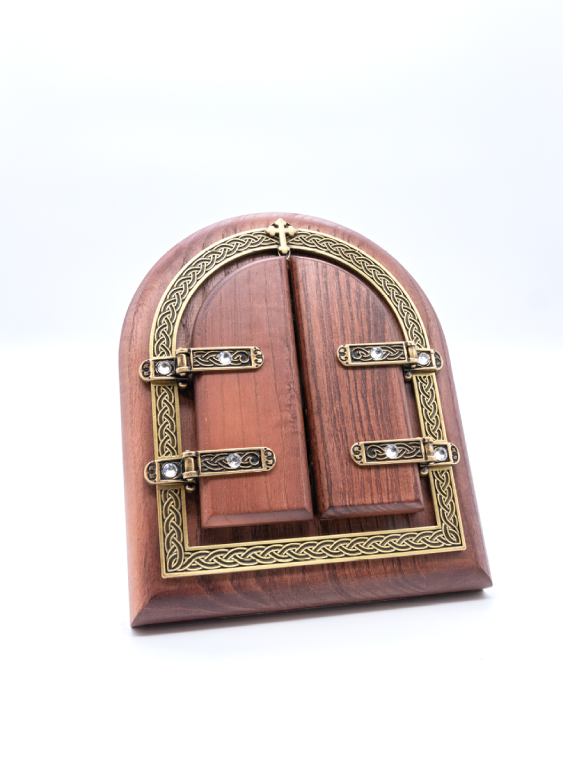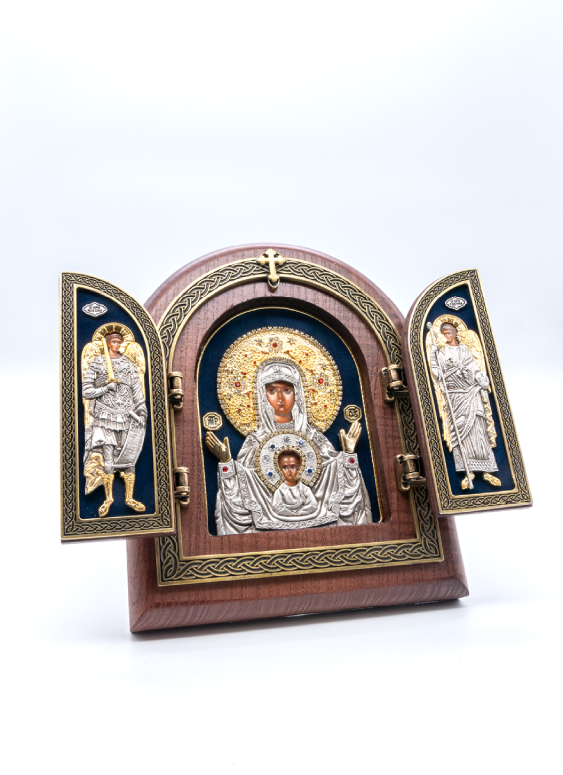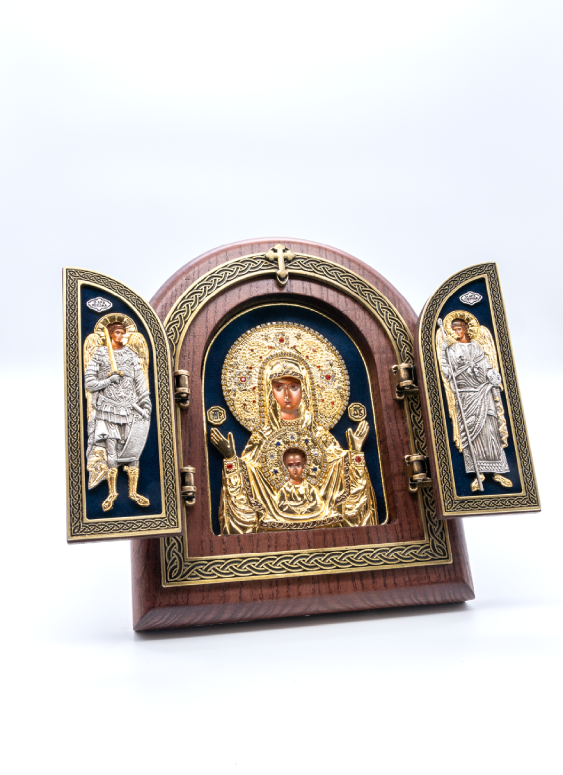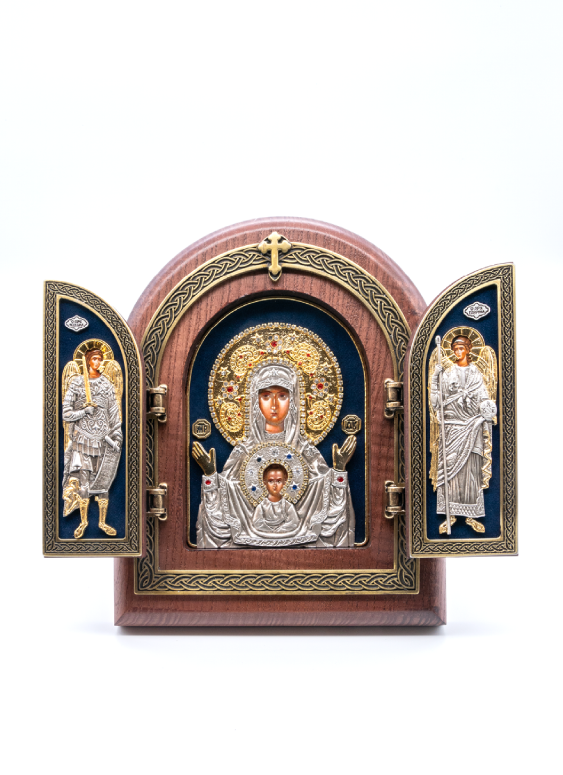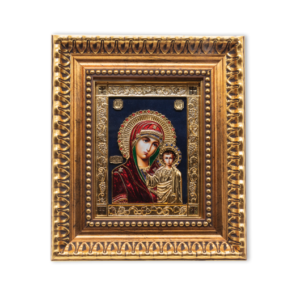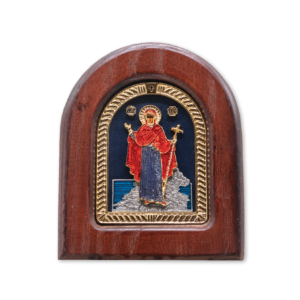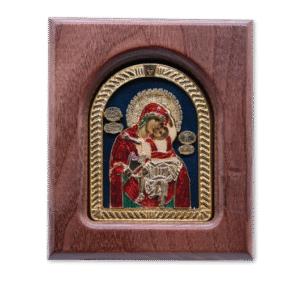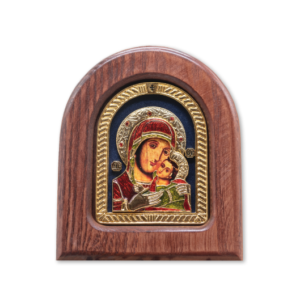The Kursk icon of the Most Holy Theotokos has its origins in the 13th century, when, according to tradition, it was found in a forest in the Kursk region. The icon quickly became known for its miracles, and many believers came to pray in front of it for healing and protection. In the 17th century, the Kursk icon became an object of great veneration, especially during wars and calamities, when it served as a symbol of hope and salvation. In 1711, Tsar Peter the Great ordered the icon to be transferred to Moscow, where a grand celebration was held in its honor.
A triptych is a work of art composed of three connected parts, most often painted or carved, which together form a single whole. In Christian art, especially in the Middle Ages, the triptych was used as an altarpiece or part of an iconostasis.
The central part is usually the largest and depicts the main scene—most often Jesus Christ, the Holy Theotokos (Mother of God), or saints of our Church.
The side panels are foldable and typically feature saints, angels, or the Lord and the Theotokos.
It is practical for transport, which made it popular in the Middle Ages among traveling believers and priests.
Our triptych is made from the finest pieces of ash wood, using icon-painting craftsmanship inspired by Byzantine and medieval originals.
It is produced by metal casting and careful hand-finishing, enriched with 24-karat gold and 925 silver.
It is painted with epoxy resins and decorated with zircons.
If you wish to give your triptych as a gift, you can also choose a ceremonial gift box.
The dimensions of the triptych are: 220x255x32 mm.
